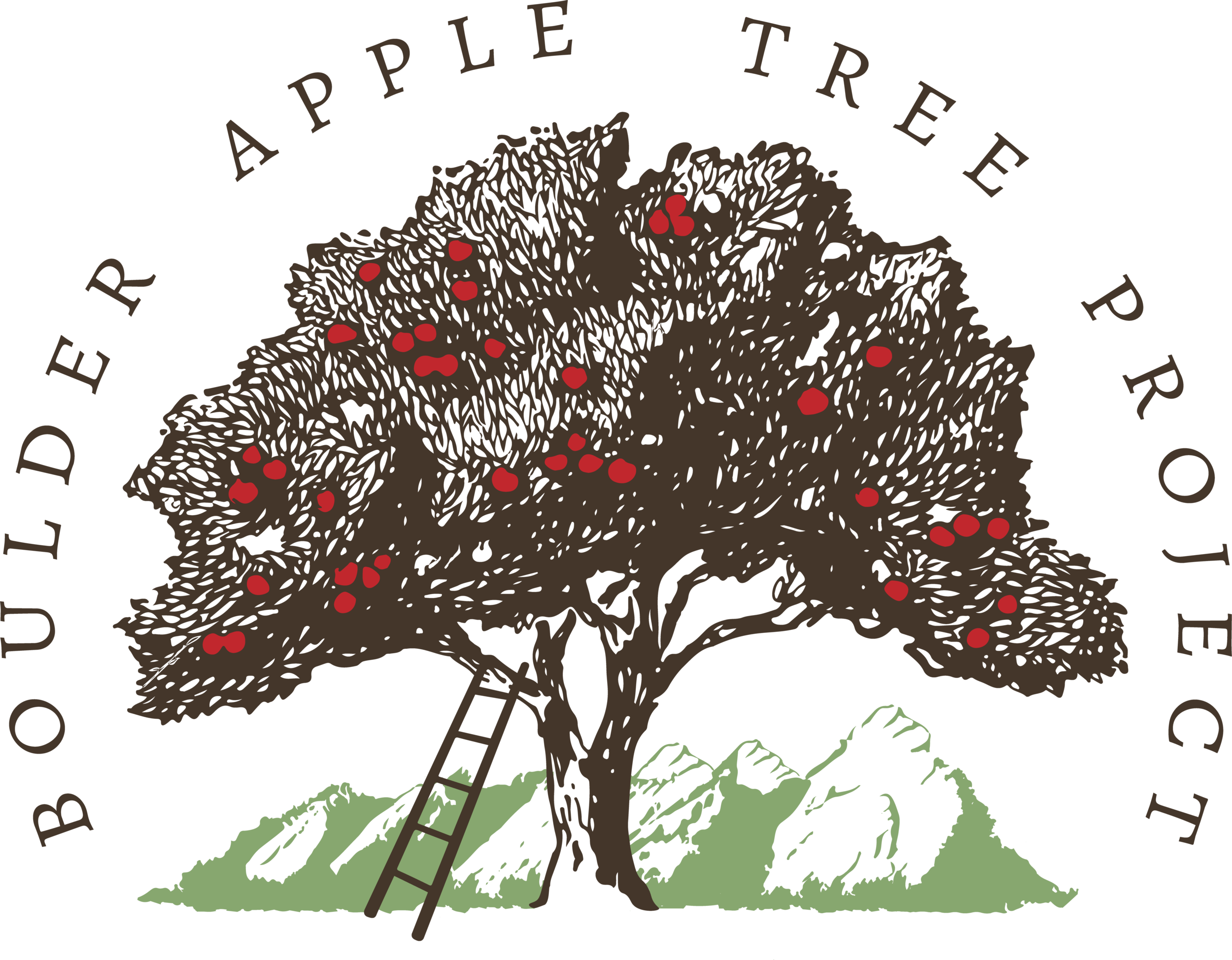Reflections on Undergraduate History Research in BATP
Amelia & Sarah surveying a historic apple orchard in Hygiene. Photo by Ezekiel Dominguez.
What historical discoveries can an undergraduate research assistant make in a semester? And can that journey of historical discovery and personal development contribute to an academic research project?
On our BATP team, science undergraduates perform the tasks that keep our research going and provide valuable, hands-on experiences for the kind of work students would do in a job or in graduate school. For history students, these opportunities are less common across the board, making the opportunity provided by our CU Seed Grant last year to hire history students as research assistants all the more exciting.
One student, Sarah Dominguez, generously offered to summarize her process and her research. She and I began her appointment by surveying a few trees together and visiting the Carnegie Library for Local History in downtown Boulder to cover the basics of archival research. At first, her job was to help us sort through the interviews we had collected in the span of a single day during our fall apple blitz, captured in handwritten notes from dozens of volunteers. This crucial data-management task enabled the other assistant and me to mine the interviews much more efficiently and much sooner than we could have otherwise.
The task provided the inspiration for a research project, as well. Dominguez describes her experience this way:
As a non-traditional student pursuing a distributed studies degree with an emphasis in history, it was my goal to gain professional research experience prior to graduation in order to better prepare me for work in research or in applying for graduate school. After compiling the Blitz data, I began thinking about the role of water in apple tree history. I decided to write an overview of Boulder’s water sources based on historic orchard locations. I cross-referenced a map the Boulder Apple Tree Project had developed displaying pinpoints of each historic apple tree or orchard in Boulder county with historic ditch maps of Boulder County that had been developed by Elizabeth Black and the Boulder Ditch Project team. The information from these two maps provided me with a comprehensive list of every ditch that supplied water to trees and orchards of interest to the Boulder Apple Tree Project. From there, referencing the Boulder Carnegie Library and the research conducted by the Boulder Ditch Project, I compiled a history of the important historical figures and companies involved in the development of each ditch, the water rights involved, methods of construction, important dates, and the purpose or intent of each ditch.
During my work I learned several valuable research skills like how to navigate local and university archives, research strategy and planning, information organization and storage, how to ask effective research questions, and how to quickly glean specific information from sources. Through my research I also learned that Boulder’s rich and diverse ecology relies completely on a network of historic ditches that were dug by early settlers beginning in the late 1800’s. Though water rights have changed and various ditches have been expanded or disused, many of the original ditches are still used to water today’s apple trees and orchards.
Dominguez’s final project reads like a how-to for future historical research on waterways and apple trees in Boulder County. I plan to use her project as the basis for a module in an upcoming environmental history course in 2020. Mentoring undergraduate research assistants has been a valuable experience for me as a graduate student, as well, forcing me to articulate my research process and giving me the chance to receive more personal, detailed feedback on what works and does not work in facilitating undergraduate research.
Research assistants help achieve the research and education goals of the Project. Our history assistants created products and data that we and other apple-lovers can build on, now and in the future for those questions we have yet to ask. Their experiences also help to show how creating subsidized, community-engaged research opportunities for undergraduates can help students develop and practice the tangible skills of a humanities education before graduation.
Amelia Brackett Hogstad and Sarah Dominguez

